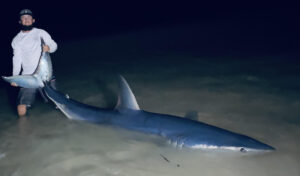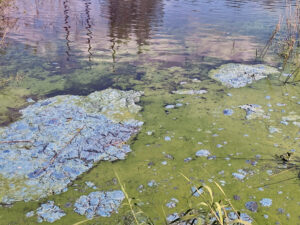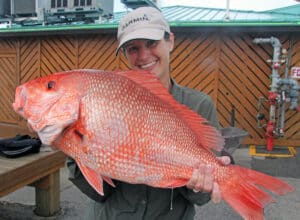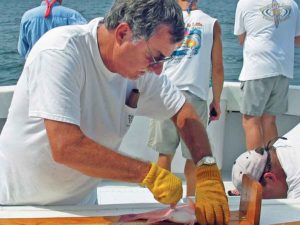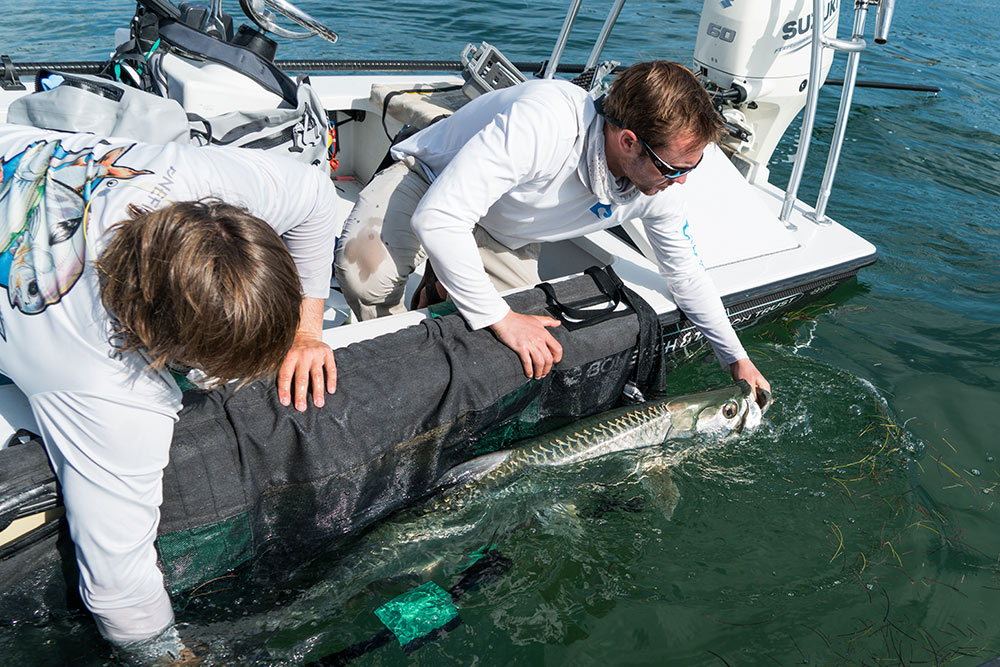
Scientists are listening to fish.
No, not like some piscine therapists hoping to solve adolescent crises. Scientists are using underwater receivers to listen to sonar signals transmitted from a wide variety of acoustically tagged fish species. And this is happening throughout coastal waters of the Southeast Atlantic and Gulf of Mexico.
In late March, three scientists studying tarpon, tripletail and cobia presented some of their Southeast regional findings to a group of more than 15 fishing guides and interested anglers at south Georgia’s Cabin Bluff corporate retreat on the Cumberland River, about 10 miles north of the Georgia/Florida border.
Cabin Bluff has worked with the Florida-based Bonefish & Tarpon Trust organization for the last two years to acoustically tag tarpon through research trips and local release tournaments. Lucas Griffin, a Ph.D. student working with BTT, presented current tarpon results, encouraged guide input and solicited support for summer tarpon tagging.
Lucas was joined by Chris Kalinowsky and Ryan Harrell from the Coastal Resources Division of Georgia’s Department of Natural Resources. Kalinowsky presented local and regional tripletail studies and cobia results from acoustic tagging.
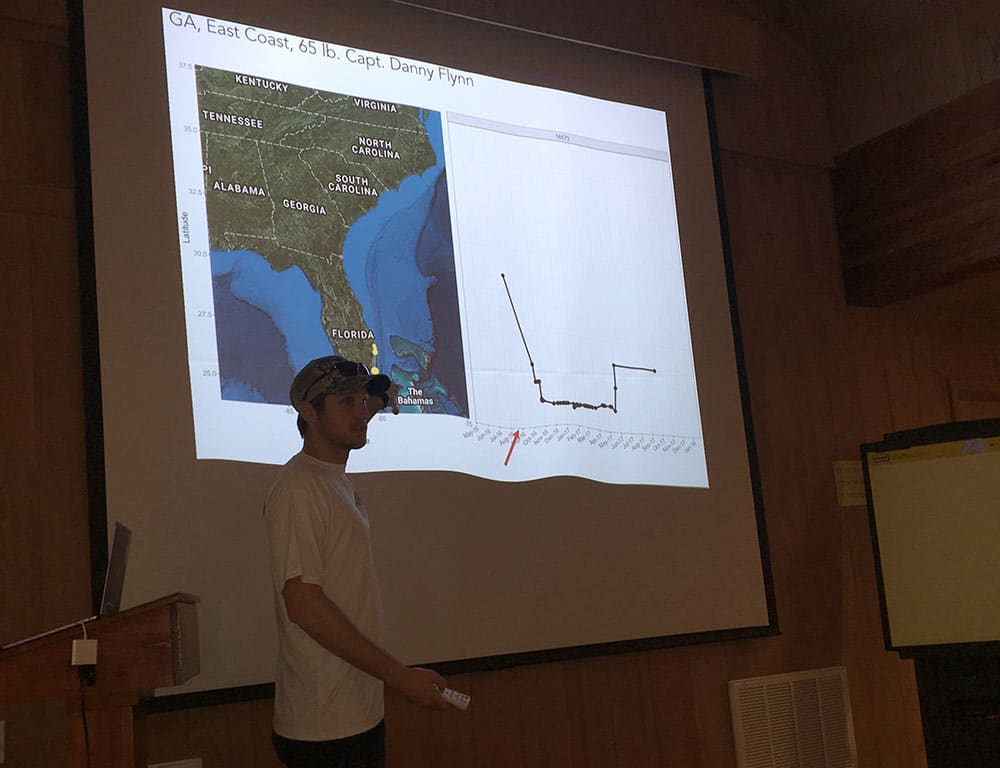
Tarpon Migrations
Of the 50 tarpon tagged since the BTT study began in 2016, 11 fish came from Georgia waters; the rest were captured in Florida or South Carolina. Griffin explained that fish of virtually any age can be acoustically tagged because the devices come in a range of sizes and are tucked into the fish’s abdominal cavity using a small incision.
Tarpon are considered “vulnerable” as a species: They’re long-lived, thriving up to about 80 years old, and they mature late — at 7 to 12 years old. Data have been poor because tarpon fishing is purely recreational.
Scientists don’t know exactly where tarpon spawn, but they have identified significant population hubs in Mexico, the northern Gulf of Mexico, West Florida and Southeast Florida. Now they want to know the connectivity between possible spawning locations and where the fish migrate or take up residence, Griffin says.
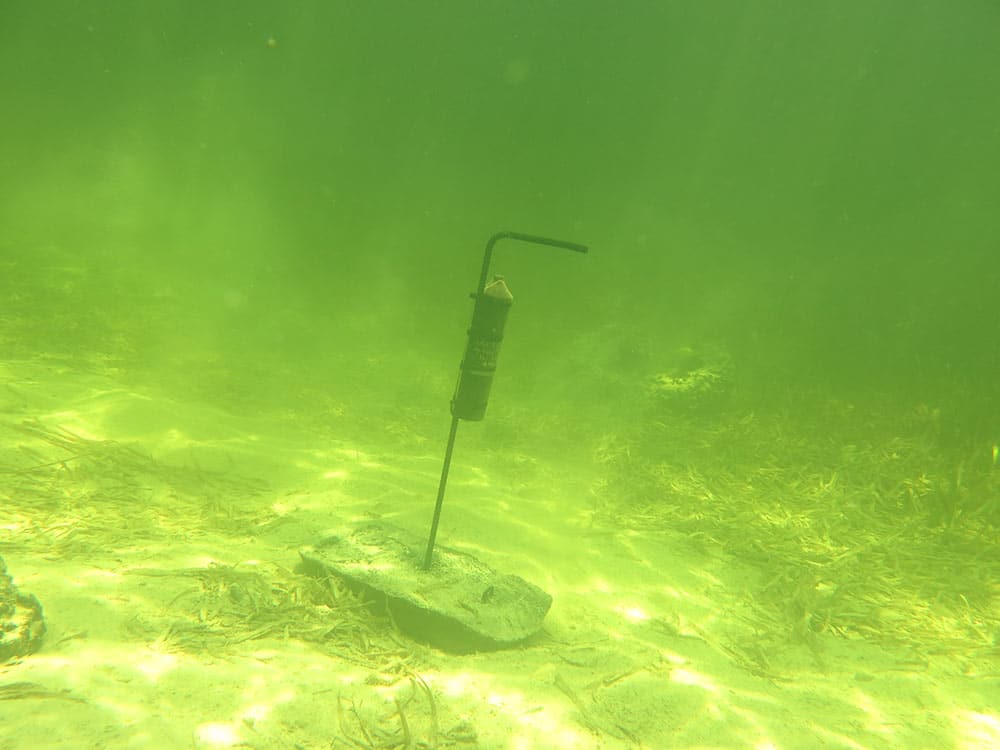
Sounds of Science
Once a fish is acoustically tagged, it’s like a swimming sound machine, transmitting sonar pings at a frequency of 69 kHz. Scientists from a variety of entities throughout the Southeast and Gulf have deployed more than 2,000 listening receivers by anchoring the footlong devices to the sea floor or deploying them from sea buoys. These autonomous devices do what humans can’t — listen 24 hours a day, 7 days a week.
Scientists in South Florida dive to retrieve the receivers and download the data once a year. Georgia scientists have averaged three dive trips a year to retrieve and redeploy receivers.
Griffin showed several documented migrations. One 55-pound tarpon swam 1,100 miles in 52 days, averaging 21 miles a day. Many fish appear to travel north in summer and south in winter, but others defy that path. BTT has also started looking at permit migrations, which has resulted in a change in seasonal protection for the fish, which swim to offshore wrecks and reefs to spawn as early as April.
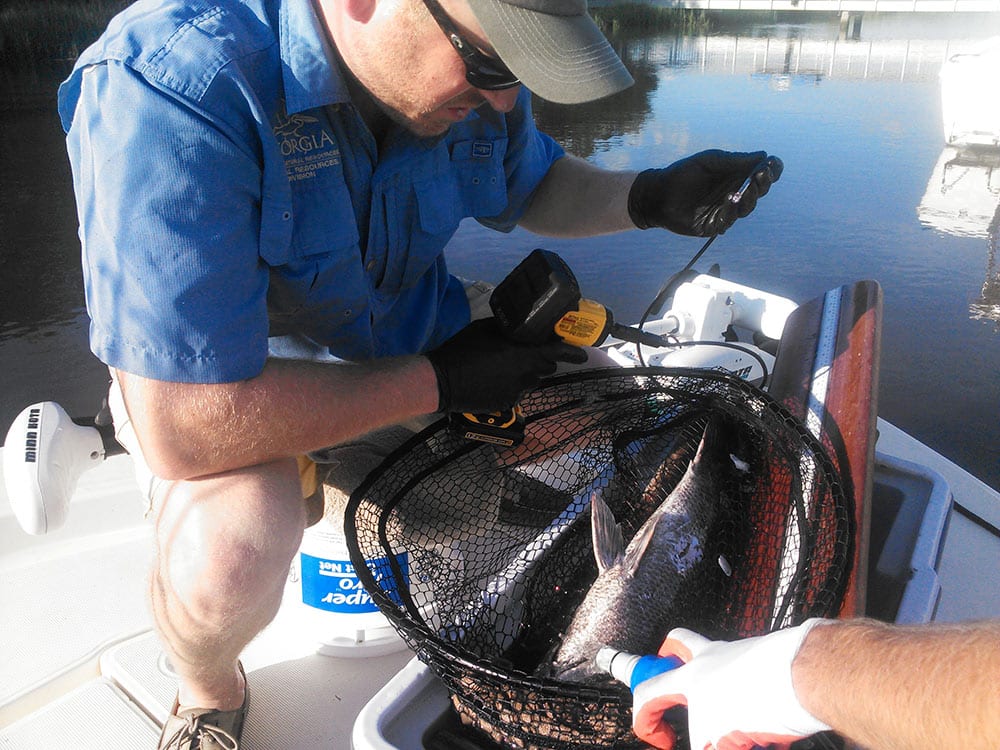
Tripletail Tagging
Off Georgia, where Kalinowsky is listening, 24 receivers line up like gates from near the beach to 12 miles offshore. Each receiver has a listening range of about 400 meters. Thus far, he’s detected 662 individual animals from 33 different species, including tripletail and cobia — his target species — but also red drum, white sharks, sea turtles, and Atlantic sturgeon.
In fact, his acoustic pilot program began in 2009 as a pilot study of tripletail site fidelity in Georgia’s Ossabaw estuary. It evolved into a larger study on the temporal and spatial distribution of Atlantic sturgeon in nearshore waters.
From that single-estuary study has blossomed the nearshore listening arrays and evidence that tripletail migrate to Cape Canaveral and South Florida as the water cools toward fall, and swim up as far as South Carolina in summertime.
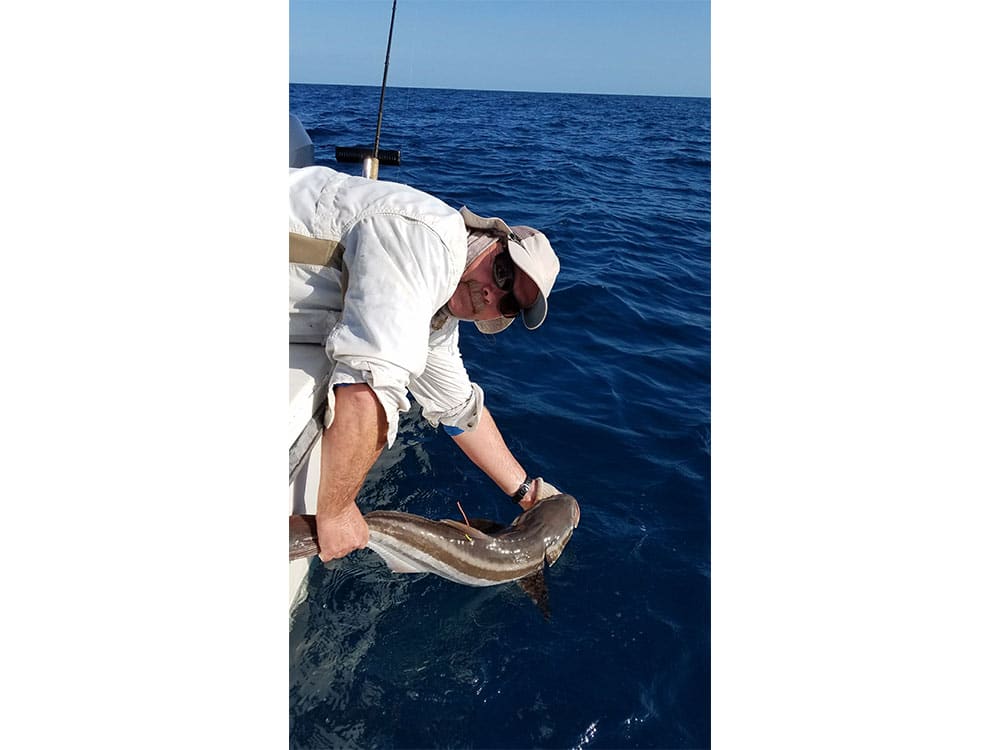
Cobia Tagging
The cobia-tagging study launched as a result of changes in fisheries management, and a ruling that divided cobia into two stocks of fish — one swimming throughout Florida and the Gulf and the other that ranges from Georgia northward. The study involves a collaboration between scientists from South Carolina, Georgia and Florida.
Kalinowsky says the data will be presented this month to the Atlantic Cobia stock-identification workshop (for the South Atlantic Fishery Management Council). State representatives attending will discuss whether the current boundaries remain appropriate. The study and preliminary results have spurred North Carolina and Virginia to pursue grants to tag and document their fish.
While these studies have just begun to produce important data, they hold promise for better understanding the movements and habits of important game fish. Unlike hyper-expensive satellite tags that pop off after three to five weeks and only work with larger fish, acoustic tags have a five-year battery life and can track juveniles as well as adults.
For more information about these programs, contact Mark Rehbein at BTT or Chris Kalinowsky at the Coastal Resources Division of Georgia’s DNR.

